
AYURVEDIC SPRING CLEANING

THE HEALING POWER OF FOOD
CLAIM YOUR FINANCIAL INDEPENDENCE


AYURVEDIC SPRING CLEANING

THE HEALING POWER OF FOOD
CLAIM YOUR FINANCIAL INDEPENDENCE
A FEARLESS TRAILBLAZER BEYOND THE SILVER SCREEN




FOUNDER AND EDITOR-IN-CHIEF
SEEMA KUMAR
@seemanetwork
@seemanetworks
EDITOR
JESSICA DOWNEY
CREATIVE DIRECTOR SAJID MOINUDDIN
DESIGN
HB DESIGN
EDITORIAL COORDINATOR ROHINI KAPUR
WRITERS
LINDSEY GALLOWAY
ABHIJIT MASIH
BINDU GOPAL RAO
ELIZABETH MARGLIN
BRAND PARTNERSHIPS, DEVELOPMENT AND STRATEGY ANJALI MANIAM
@seemanetwork
COVER CREDITS
PHOTOGRAPHY:
Geo Mantilla @geomantillaphoto
MAKEUP:
Kanwal Batool @iamkanwalbatool
STYLIST:
LaDaska Mechelle @ladaskamechelle
SEEMA™ ISSUE 3 | MARCH 2024
EMPOWERING SOUTH ASIAN WOMEN GLOBALLY SEEMA KUMAR, FOUNDER
COPYRIGHT © 2024 SEEMA, JAYARAM, LLC SEEMA.COM
PUBLISHED AT P.O. BOX 814, PENNINGTON, NJ 08534
SUBSCRIPTION INQUIRIES: INFO@SEEMA.COM OR SEEMA.COM/ARTICLE/CONTACT-US TO SUBSCRIBE WRITE TO: Subscribe@seema.com
SPONSORSHIPS, PARTNERSHIPS, ADVERTISING, NEWSLETTER AND EVENT
INQUIRES: INFO@SEEMA.COM
FOR MORE INFORMATION ON ADVERTISING
EMAIL: advertise@seema.com
As we head into the vibrant month of March, we come together to honor Women’s History Month. For the SEEMA Network, it marks another year in the ongoing journey that commenced five years ago.
While we proudly bring to you a reflection on the progress made, the challenges that persist, and the inspiring voices shaping the narrative for gender equality for South Asian women, the fight for women’s rights and equal status continues to be an essential conversation. In this issue, we shed light on the nuanced aspects of the equality efforts that often remain hidden.
While the big cities might showcase encouraging signs of progress for women, there are countless places where the struggle for women’s rights remains invisible. It’s a reminder that our collective effort must extend beyond city limits and into every corner of the world. A United Nations study highlights that women remain disproportionately subject to unpaid labor, including household chores, childcare, elderly care, and working in
the fields. As a result, they have less time to engage in paid labor or work longer hours, combining paid and unpaid labor. It’s a call to action to bridge this gap and ensure that women are rightfully compensated for their contributions.
Crucially, advocating for women’s rights does not pit women against men. Throughout my life, many men have been incredible allies in the pursuit of equality, and recognizing their support is essential for fostering a society that thrives on mutual respect and understanding.
The representation of women in mainstream media, especially on the big screen, is a realm in which progress is noticeable but still sluggish. Our cover story features the remarkable Sheetal Sheth, a trailblazing actress, author, and advocate. Sheetal’s story is a testament to the positive momentum we’ve gained, yet it serves as a reminder that there’s much more work ahead. With an extensive presence in the Western entertainment industry, Sheetal sheds light on its shortcomings, particularly in highlighting South Asians. She poses a compelling question: What if South Asian faces were regularly
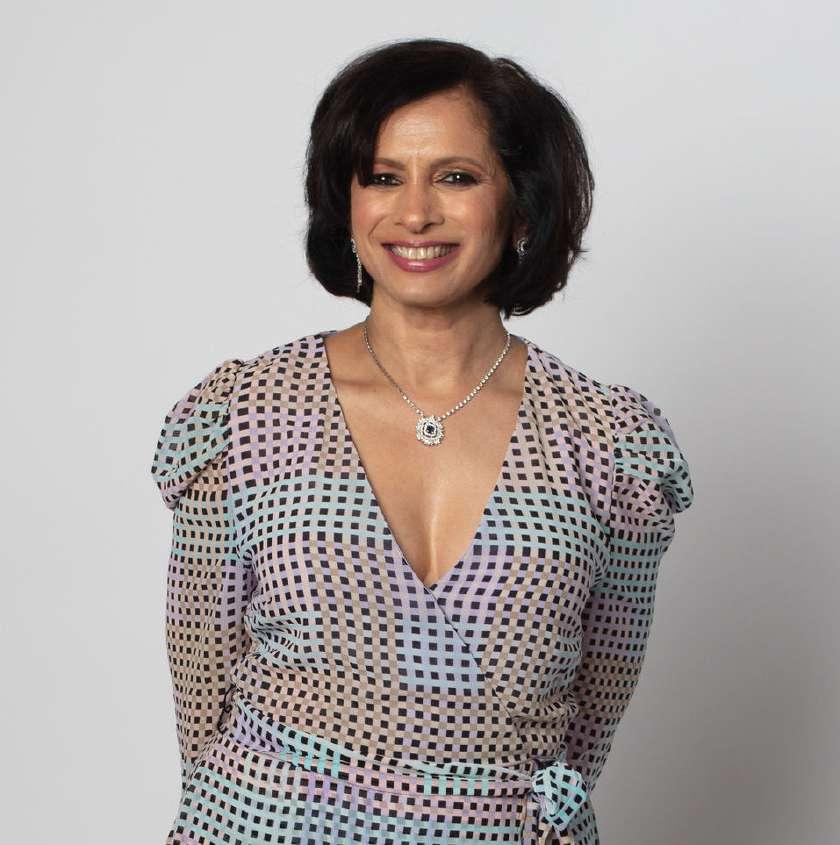
included in mainstream Hollywood casting choices? Would breaking from tradition allow for character portrayals that defy ethnic and racial expectations? Amidst our celebration of women’s strength and achievements in March, Sheth encourages us to recognize the boundless possibilities for South Asian women, transcending societal norms and challenging Hollywood’s status quo. “We can do anything we want,” she affirms.
Celebrating the strides made, we also acknowledge the achievements of influential figures like Mindy Kaling and Priyanka Chopra. These women are breaking barriers, not as South Asians confined
to specific roles, but as lead characters in mainstream movies. Their success marks a significant step forward and reinforces the idea that progress is possible when we challenge stereotypes and push boundaries.
I encourage you to join the conversation, share stories of empowerment, and contribute to the ongoing narrative of achieving equality for South Asian women. Here’s to a March filled with inspiration, reflection, and a renewed commitment to the cause of equality.
• Seema Kumar, Founder, SEEMA Network •
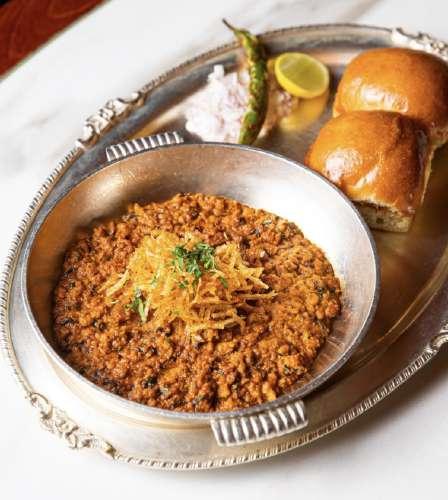


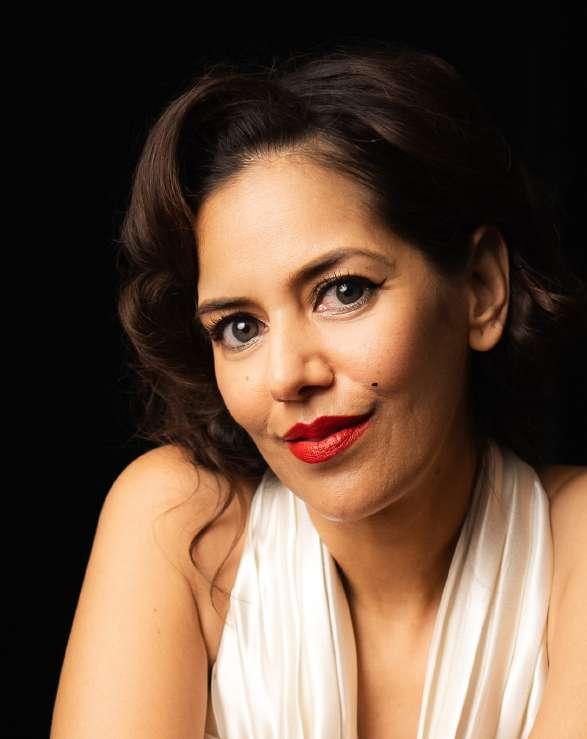




The growing presence of South Asians at the music awards ceremony
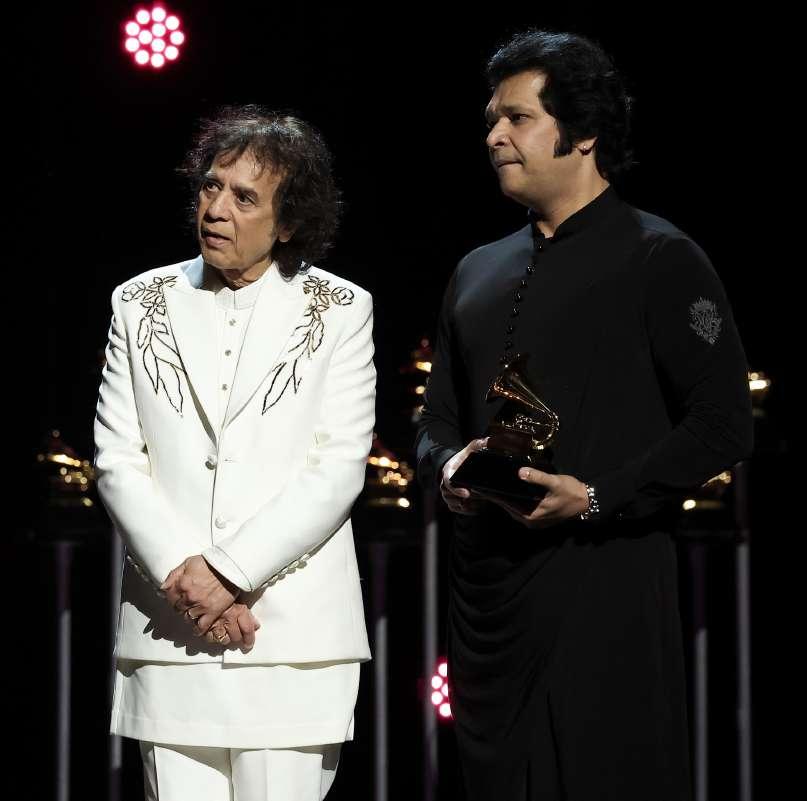
The casting of Ambika Mod in a popular Netflix series is a score for South Asian representation
Forecast: India will become the world’s third-largest economy by 2027
On a night dominated by Taylor Swift, Miley Cyrus, and driving rain, there was plenty for celebrators of South Asian music to cheer about. This year’s Grammy Awards at Crypto.com Arena in Los Angeles took place in early February in the midst of one of the heaviest torrential rain falls the City of Angels has ever seen. In fact, the venue was outfitted with tents to help keep the hundreds of artists from the rain. With each passing year and increasing number of South Asians are not just cheering on their favorite artists or attending the Grammys as members— they are the ones being celebrated and recognized. With Raj Kapoor serving as the executive producer of the show, there was something for every generation of music fan.
Making history as the first South Asian to win three Grammy awards in one year,


Zakir Hussain won Best Global Music Album, with his fusion band Shakti with John McLaughlin. This was Shakti’s first album in more than 45 years. Adding new members Shankar Mahadevan, V. Selvaganesh, and Ganesh Rajagopalan, they also received their first Grammy. Hussain also won Best Global Music Performance for “Pashto” and for Contemporary Instrumental Album for “As We Speak,” both featuring Rakesh Chaurasia.
The Grammy floor was filled with music royalty and celebrities—from Beyonce and Oprah to Miley Cyrus to actress Meryl Streep.
Next year, look for more South Asians on the Grammy stage—performing!
David Nicholl’s book One Day, a global bestseller that was originally published in 2009, follows Emma Morley and Dexter Mayhew, recent graduates of University of Edinburgh, over the next two decades of their lives. In the novel, Morley is described as having “bottled-red hair,” “pink mottled cheeks,” and “blue and green” eyes, which led to some surprise—and applause—when 29-year-old British-born Indian actress Ambika Mod was cast to play the role in the Netflix adapatation. Since its release last month, its popularity has soared, garnering both critical acclaim and a huge audience of more than 15 million views.
Addressing the dearth of roles for South Asians, particularly women, Mod told the BBC that she is aware that her casting has great significance and meaning in terms of representation in Hollywood. ““Even up until my early 20s, it was something that was quite rare in TV and film,” she said, acknowledging that it’s changing. “I think we’ve still got a long, long way to go.”
“We thought Ambika had all the qualities of Emma but we didn’t want to ignore her heritage either, so she worked very closely with Nicole [Taylor, series creator] and the writers to make sure that it made sense to her, and I think it worked beautifully.David Nicholls, writer, One Day

British actress Ambika Mod attends the 2023 BAFTA Television Awards with P&O Cruises at The Royal Festival Hall on May 14, 2023 in London, England. (Photo by Joe Maher/Getty Images)
As prognostications go, this one’s not a stretch. Analysts at the investment banking firm Jeffries predict that India is poised to surpass Japan and Germany as the world’s thirdlargest economy by 2027, a significant jump from a decade ago, when India ranked as the world’s ninthlargest economy.
Recent data shows that India has already risen into the fifth position, with a $3.4 trillion gross domestic product (GDP), a common indicator of an economy’s strength. The Jefferies forecast says that India’s GDP is expected to reach $5 trillion by 2027, aiming for nearly $10 trillion by 2030,
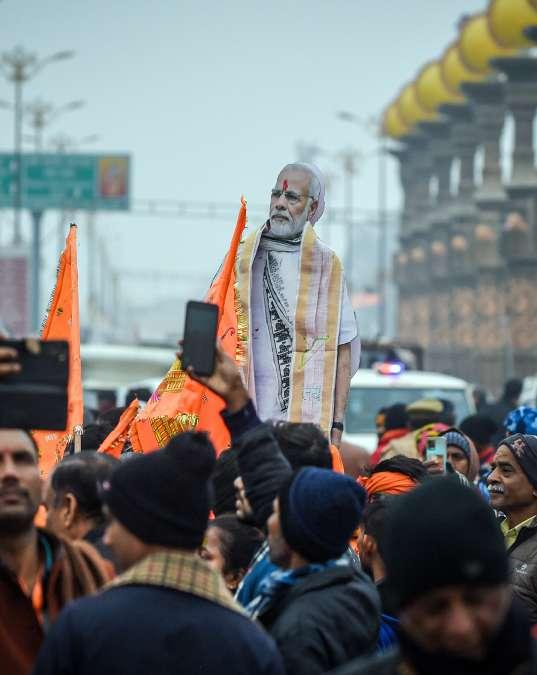
projections based on the fast-growing population and increased domestic consumption and investments. A variety of reforms implemented under Prime Minister Narendra Modi’s leadership are also considered to be significant catalysts for economic growth in the country.
2022, BY COUNTRY GDP, CURRENT PRICES IN USD
2023, BY COUNTRY GDP, CURRENT PRICES IN USD
United States $25.5 trillion United States $26.9 trillion
China $17.9 trillion China $17.7 trillion
Japan $4.2 trillion Germany $4.4 trillion
Germany $4.1 trillion Japan $4.2 trillion
India $3.4 trillion India $3.7 trillion
United Kingdom $3.1 trillion United Kingdom $3.3 trillion
France $2.8 trillion France $3 trillion
Russia $2.2 trillion Italy $2.2 trillion
Canada $2.1 trillion Brazil $2.13 trillion
Italy $2 trillion Canada $2.12 trillion
Source: U.S. News & World Report




Meet Your Next Food Search: “Sattvic Diet”
London’s Gymkhana earns its second Michelin Star
From collegiate food trucks to a run for Congress, Bhavini Patel is making her dreams happen
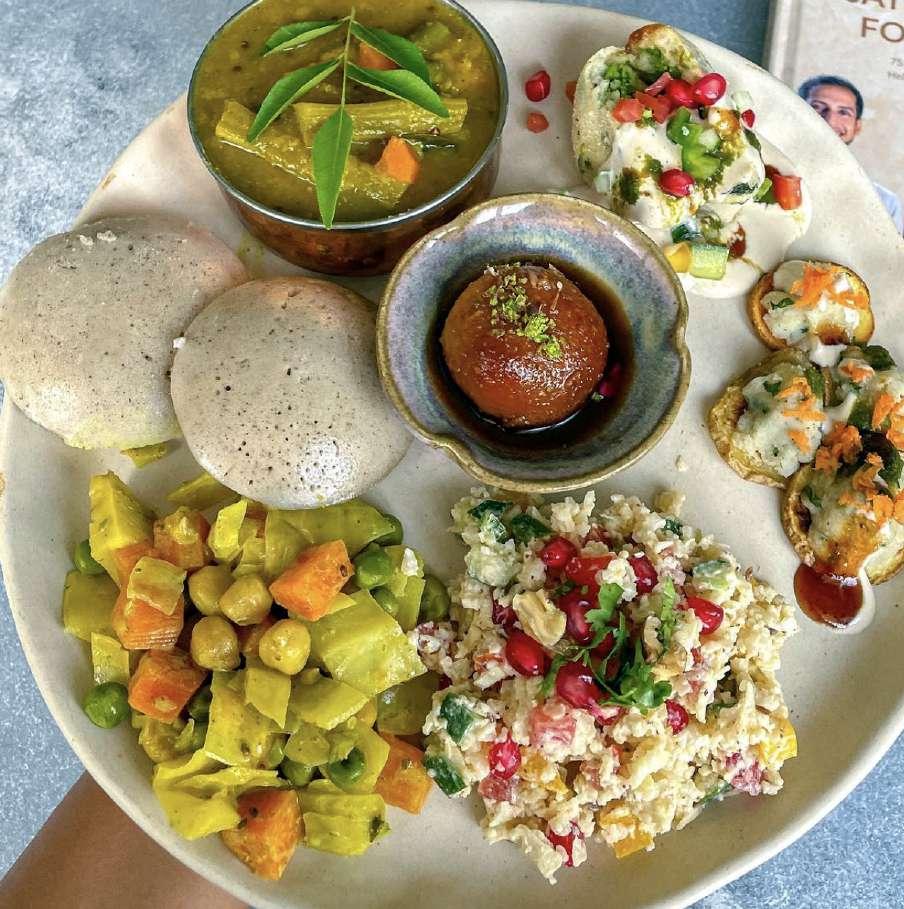


Although we think of it as a novel idea, mindful eating is not a new concept. The ancient principles of Ayurvedic and Sattvic cooking filled kitchens across the globe long before meatless Mondays, plant- based diets, and raw food movements.
While Ayurvedic lives a bit more in the public consciousness these days, Sattvic (spelled Sattvic, Sattvik, or Satvik) cooking is getting some time in the spotlight on social media and online. While the two are related, here is the distinction: Sattvic is one of the three Gunas of the Ayurvedic philosophy. It comes from the Sanskrit word “Sattva” which means pure, clean, strong energy. Like many health-driven diets, a Sattvic diet includes fresh fruits and vegetables, and it specifically includes sprouts, honey, ghee, nuts, grains, lentils, ginger, unrefined sugar, turmeric, black pepper, fresh herbs, milk, and dairy products as well.
The Sattvic belief is that by consuming 40% natural fresh foods you will get all the necessary nutrients, dietary fiber, antioxidants, proteins, minerals and monounsaturated fats you need. You won’t spend hours cooking, but to achieve this you’ll need to sharpen your kitchen knife and learn to really love salad. The good news: It will boost your immunity, brighten your mood, help your digestive system, and aid in weight loss.
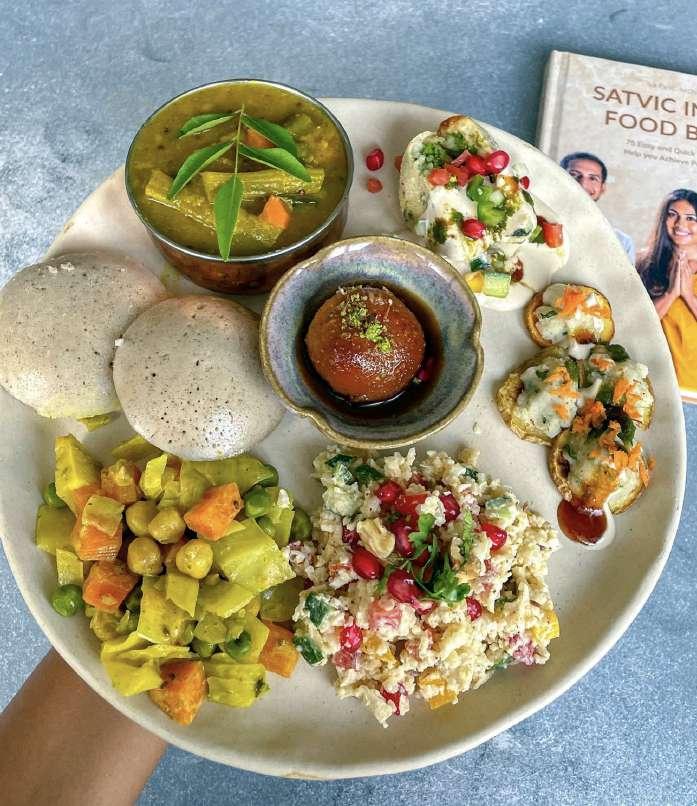
If you’ve already tired of your new years “eat healthy” resolution and are in need of some inspiration, stop scrolling and check out these four Sattvic sites and get some of that pure, clean, strong energy on your plate today.

Divinetaste.com
Divine Taste by Anushruti, a cooking and nutrition advisor based in Mumbai, India, serves up Ayurvedic and Sattvic cooking principles through recipes, videos, master classes and workshops.

@satvicmovement on Instagram Subah Saraf and Harshvardhan Saraf together lead Sattvic Movement a wildly popular YouTube channel and Instagram where they promote a holisitic lifestyle and share Sattvic recipes for everything from nachos and pizza to healthy breakfast and snacks. They also address how this diet can be beneficial for ailments from acne to eczema. This month they are having a full health challenge viewers can join or you can just click find out what to eat tonight for dinner.
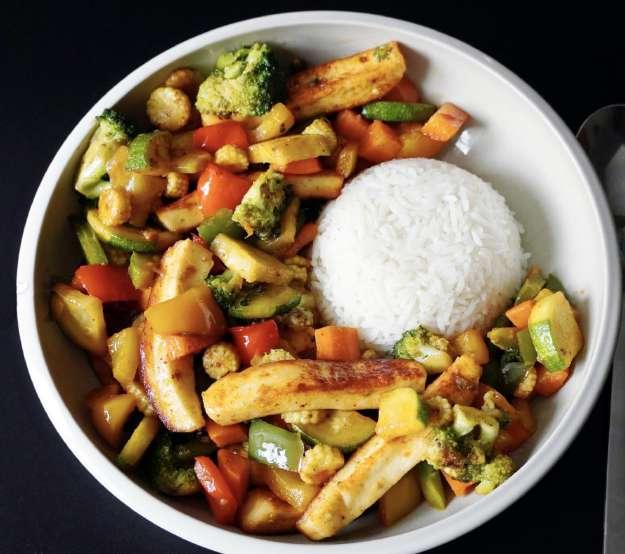
@sattvikkitchen
This YouTube channel is chock full of easy to follow, fun Sattvic recipes. From waffles to pasta dishes and ideas for leftover rice every recipe promotes eating pure food leading to a pure heart.
The Sattvic diet avoids processed or stimulant-rich foods, such as caffeine, refined sugars, and overly spicy or greasy dishes.


World travelers and food fanatics flock to destinations based on reviews of the worldrenowned French fine dining Michelin Guide. The top restaurants receive the coveted three stars and only a smattering around the globe are bestowed with two. This year, London’s spectacular Gymkhana finally scored its second Michelin star after earning its first a decade ago in 2014.
The two-story Albemarle Street location is fashioned after the residential mansions in Kolkata and Pondicherry with rich layered textiles and vibrant colors, and adorned with original hunting trophies from the Maharaja of Jodhpur throughout the restaurant. This sets the scene for guests to indulge in contemporary Indian cuisine that uses seasonal British ingredients in kebabs, tikka, game chops, biryani, and sabzi with a strong focus on tandoor and chapatta sharing dishes.
The elite social clubs of India, where members of high society would socialize, eat, drink, and play sports, inspired Gymkhana. With its second Michelin star, you can bet your gin and tonic those lucky enough to garner a reservation to this London hotspot will be deemed as privileged as those select few social club members.
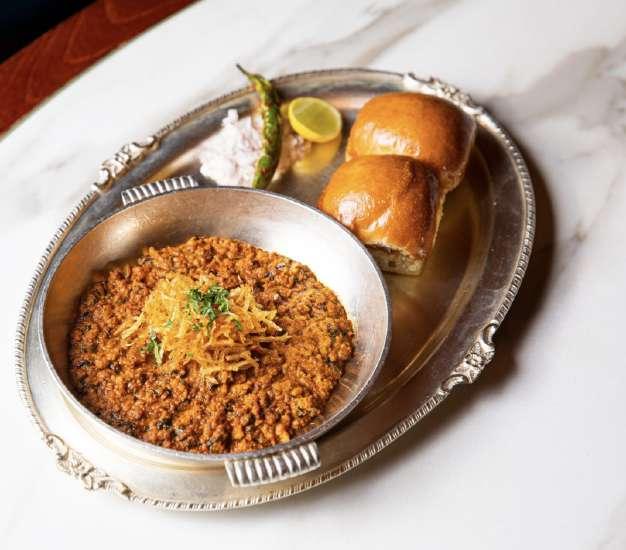

At 30 year old, congressional candidate Bhavini Patel embodies so much of the American dream. Raised by a single immigrant mom from India, she started feeding the future of Pennsylvania as a child—literally. Early on, she worked after school and on weekends at her family’s food truck business, India on Wheels, catering to locals and students on the campuses of University of Pittsburgh and Carnegie Mellon University.
Bhavini walked in their shoes and eventually graduated from Pitt herself and went on to earn her Master’s degree from Oxford University. Now she is back in the Pittsburgh area feeding the community by nourishing local neighborhoods as an advocate for public safety, green spaces and showing support for small businesses.
Patel currently serves as an elected official on the Edgewood Borough Council, and works as Community Outreach Manager for Allegheny County where she works on criminal justice reform. This year India on Wheels is still a feeding hundreds of students as Bhavini hits the ballot as the U.S. Democratic candidate Congress in the 12th Congressional District of Pennsylvania.
“Public service is about being present in the community and serving the community. For me, it’s about being in the district, getting a sense of people’s dayto-day lives and what people are experiencing that positions you to best serve and lead an area. That’s critical for me.” —Bhavini Patel in the Pittsburgh Jewish Chronicle.

“ Early detection allowed us to take control of the situation and make a plan together.”
If you’re noticing changes, it could be Alzheimer’s. Talk about visiting a doctor together.
ALZ.org/TimeToTalk


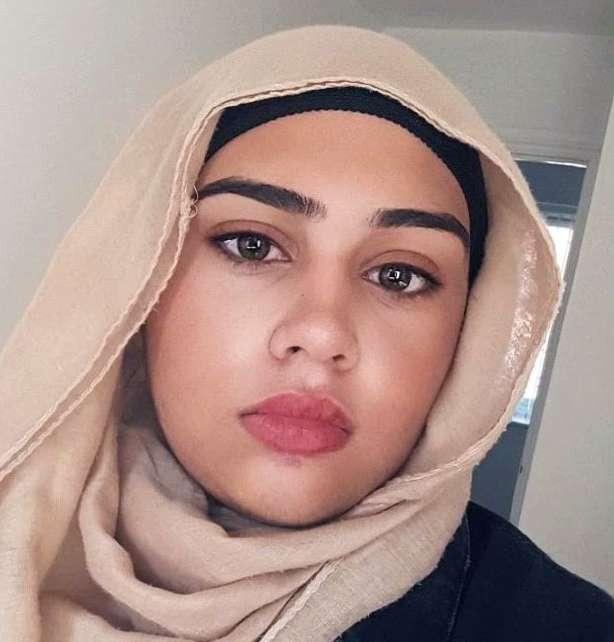
A renowned event planner weighs in on big wedding secrets
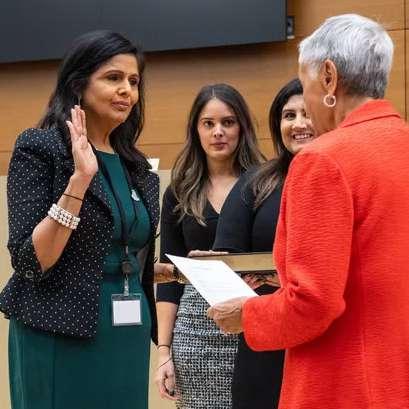
How one engineer is on a mission to get more South Asian women in tech, especially those from less affluent backgrounds
The election of Neena Singh makes history in New Jersey
Whether involving an intimate elopement or a luxury multi-day event, weddings bring their own set of creative challenges, not to mention the high emotions that come with joining two families together. But Ayesha Hakki, the visionary behind Events by Ayesha, lives for the challenge.
With expertise as an art director and event producer, she has orchestrated a myriad of gatherings, including social soirées, fashion showcases, corporate affairs, and notably, exquisite weddings—and serves as the creative force behind the inception of a bridal and fashion magazine dedicated to the South Asian community in the United States. We spoke to her about what makes for the most memorable events and advice for upcoming brides-to-be.
What made you decide to start an events company?
We were doing events all the time very organically. Our clients started asking us, “Hey, can you help us with a product launch? Can you do a fashion show for us? Can you do a party for us?”
Eventually our magazine readers started coming to us and saying, “We really like what you put in the magazine. Would you be able to help us do our weddings?” I want to focus on doing events full time


because I really enjoy it. I’m very passionate about it, and I’m very good at it.
You offer not just weddings, but also elopements. How do you plan one?
An elopement is when the couple says, “We’re just gonna take a couple of close people and go to some destination and just have a small, intimate, but meaningful celebration.”
It was more a thought that came out during the Covid time. But the one thing I did learn is, as I focus mostly in the South Asian market, we are not about eloping. We are all about family and culture, and celebrating love and tradition. Although destination weddings have been very big, they’re very challenging as a planner.
What have been some of the most challenging requests you’ve had?
The South Asian wedding has more guests, more events and more ceremonies. It’s just a lot more details that need to be figured out and executed. When it comes to the weddings, I don’t mind the outlandish request, because it makes me stay on my toes. It’s exciting for me to figure out something new. It just makes my job much more interesting.
One thing that’s always a challenge in every wedding is sometimes, some of the guests will invite a little bit too many people, and then we have to manage them. That could be a bit of a diplomatic nightmare.
Most brides these days have their wedding planned out to the last detail. Why should they hand it over to you to manage their biggest and most important day?
You can do your taxes through an online program but you’re not gonna get the experience of someone who does this day in, day out, to give you more deductions.
When it comes to planning your wedding, I live and breathe this, for over 20 years. I have a certificate in luxury event design through Preston Bailey. Mariah Carey is one of his clients. He’s one of the top planners in the world. I also have a certificate in contract law from Harvard, so I’m able to look at contracts. I’m able to see things that for someone who is doing it for the first time won’t, find them ways to cut expenses. I have relationships with vendors. They always give me the best service, the best deal, and because we have a personal relationship, the vendors really excel in what they do.
That’s what a planner does: She looks at the bigger picture, and then tries to figure out how can I make this better or different from anything you see on Instagram or on Pinterest? That’s really why a planner makes all the difference.


How one engineer is on a mission to get more South Asian women in tech, especially those from less affluent backgrounds
Despite campaigns to get more women into technology in recent years, women’s representation still lags woefully behind. In fact, according to research by Hired. com, 18% of technology roles are filled by women and only a third of those are Asian.
That stat doesn’t surprise Angelina Aziz, a British software engineer and tech founder. She notes that still many traditional South Asian parents advocate instead for daughters to pursue biology, medicine or other traditional fields. “Engineering is seen as a viable career choice for men,” she recently told the BBC. “More traditional south Asian parents don’t advocate for their daughters to go into it.”
As a South Asian woman, Aziz felt fortunate to have encouragement from her family to pursue a career in STEM. She has found that the technology sector offers a better work-life balance compared to fields like healthcare and big pharma. So she’s been on a mission to use her own skills to help advocate for students like her.
In 2023, Aziz co-founded the AI platform Auralyze AI, which helps disadvantaged students prepare for university interviews using real admission questions and AI feedback. Aziz met her co-founder at a Muslims in Tech event in early 2023. Just two weeks after starting to work together, they created the first prototype of Auralyze AI to help level the playing field for less affluent students with university admissions.
Lacking the resources and coaching wealthier applicants have, students from poorer backgrounds are less likely to get offers from top universities. But her technology aims to give these students a leg up. By using her software, students can record themselves answering questions from typical admission interviews and the AI will offer feedback on how to improve their communication skills.
By encouraging more South Asian women to consider technology careers, Aziz hopes to inspire a new generation of diverse leaders in the field. With more role models and family support, Aziz believes South Asian women can truly transform technology for the better.
Neena Singh has always believed that everyone should have a seat at the table. And after the most recent election in Montgomery, NJ, she’s taken one of her own. Elected as mayor of the township, she also becomes the first Sikh woman to be named mayor in the state of New Jersey.
“Today is a historic moment for our community and our entire state,” Singh said upon her election. “I am also incredibly proud of our township for, once again, breaking barriers and showing our state what inclusive, transparent and forward-thinking governance looks like.” In 2007, the town also named the state’s first Asian American woman mayor, Cecilia Xie Birge.
Fluent in Hindi and Punjabi, Singh was born in India and earned her bachelor’s degree in political science and English Literature from Kurukshetra University in Haryana, India. Emigrating from Canada in 1995, she has lived in Montgomery for 22 years, spending much of that as a real estate agent in the area.
Her priorities as mayor will include public safety and health, particularly around pedestrian safety. She also remains committed to social equality. “I am also passionate about woman empowerment. That is one of my major priorities,” she said. “I have lived my life making sure girls know they are equals.”
“Today is a historic moment for our community and our entire state.”
The
of Neena Singh makes history in New Jersey
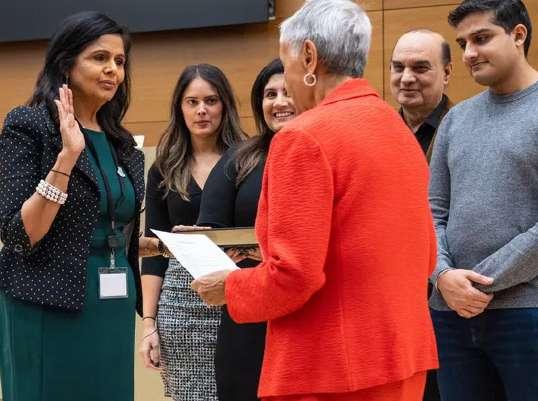
When it comes to political representation, Indian Americans are having a moment. In 2013, only one Indian American was serving in the House of Representatives and fewer than 10 Indian Americans had seats in state legislatures.
10 years later, Congress includes five Indian Americans and 50 serving in state legislatures.
•


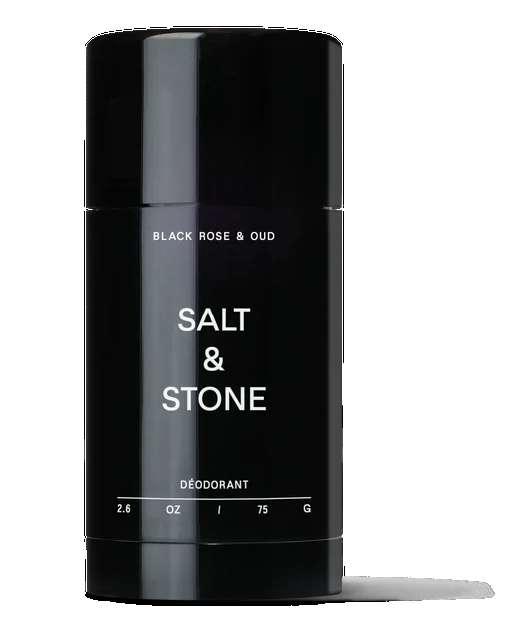
The newest viral makeup trend amplified by a South Asian actress
From underworld cities to riveting landscapes, this ancient destination often feels out of this world
natural deodorants that smell as good as spring
If last year was all about the latté look, this spring moved toward a darker hue. Marked by deep chocolate browns and black coffee colors, the #EspressoMakeup trend already has more than 50 million views on TikTok.
The trend was recently amplified by Poorna Jagannathan, who stars in season four of Netflix show Never Have I Ever, where deep brown shades adorned both her eyes and lips in a recent photoshoot on Instagram. To achieve the look, apply a deep, rich brown to the creases and edges of your eyes. You can follow up with a more subtle brown or beige color on the middle part of your eye. Complement it with a dark eyeliner, extending past the lid for a bit of dramatic flair. Pick a dark, rich lip color—matte or gloss—to finalize the high caffeine glam.
Here are a few products to help get the look:
Rhode Peptide Lip Tint in Espresso Brown Hailey Bieber was an early adopter of the coffeeinspired trend, and her peptide lip gloss leaves the perfect blend of tint and high-gloss for pretty, plumped lips. $16, rhodeskin.com
Charlotte Tilbury
Luxury Palette in The Sophisticate
Complete with cream, tan, taupe & chocolate shades, make this your one-stop shop for rich, blendable espresso eye color.
$55, charlottetilbury.com


Makeup: @allanface
Makeup Assistant: @rubyvo_
Hair: @biabiabia
Stylist: @sarshslutsky
Live Tinted Hueliner Longwearing Pencil Liner in Brown
We’ve long loved this South Asian-founded brand that puts inclusive beauty first. This perfectly balanced brown liner contains argan oil and hyaluronic acid to help glide on eyelids effortlessly.
$20, livetinted.com



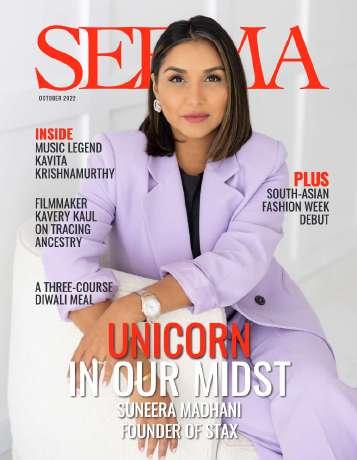
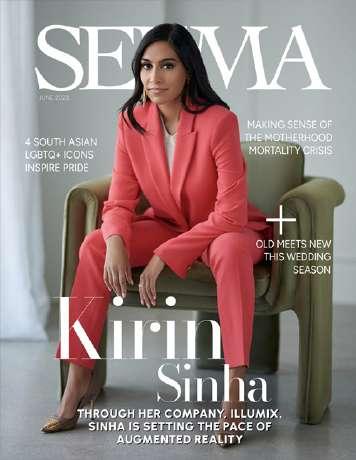


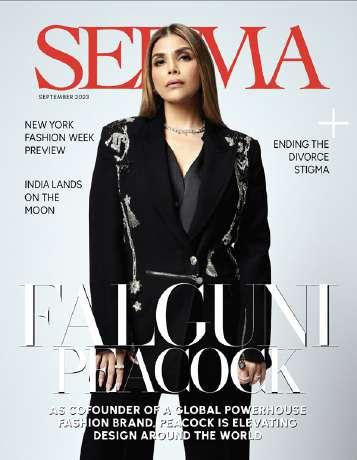
From underworld cities to riveting landscapes, this ancient destination often feels out of this worldBy Sugato Mukherjee
At first glance, the Cappadocia region in Turkey can look like something out of a dream. Active volcanoes once dominated the landscape here, and lava flows shaped the soft rock into unusual shapes. The earliest settlers in this part of Central Anatolia carved homes out of the naturally-formed cavern shelters, some of which have now been converted into boutique cave hotels. To experience a bit of what the region has to offer, stay in Göreme, where the wind and the rain have sculpted winding valleys of craggy cliffs and conical fairy chimneys. The small town makes the perfect jumping off point to see some of the unique wonders of this part of the world. Here are just a few:

Byzantine Frescoes
The establishment of the earliest settlement around Goreme has been traced back to 1800 BC, where for many centuries the area was a watershed between two mighty empires – the Greek and the Persian. In the middle ages, Byzantine Christians fled from marauding Arabian armies and took refuge in the cliffside chambers tucked deep in the folds of this surreal moonscape.
The religious Christians not only built their rock-hewn living quarters but also a collection of rock-cut chapels and cavern churches, which are housed in the Goreme Open Air Museum , a UNESCO World Heritage site. Despite centuries of weathering and vandalism, many of the beautiful frescoes of the cave churches are breathtaking with their freshness of colors. Created between the 10th to 12th centuries, they depict scenes from the Bible and the life of Christ.

The lunar landscape of the Devrent Valley resembles a sculptural amphitheater with its clustered collections of volcanic cones and pinnacles, which strangely resemble camels, crocodiles and serpents. In nearby Pasabag, also known as Monks Valley, mushroom-shaped fairy chimneys rear up from the surrounding vineyards. Uchisar Castle, a royal rectangular crag, and the highest point in all of Cappadocia, offers a stunning panorama from the upper floors, reached by a winding outer stone staircase.
Kaymakli is one of the largest of Cappadocia’s underground cities, built by the early Christians, where they had taken subterranean refuge in an intricate network of underground cities, each of which could house 10,000 people. In the depths of this ancient city, through narrow hamster tunnels and passageways, you can see living quarters with blackened walls that doubled up as kitchens, granaries with huge millstones, and churches with frescoed altars. The interiors are surprisingly cool and with a lot of air circulation thanks to ventilation shafts cleverly disguised as wells.

The most picturesque part of Cappadocia, the Red and Rose Valley can be reached via the small town of Cavusin, dominated by a cliff where a cluster of abandoned houses tumbles down the slope. Plan a trip for dusk here to see honeycombed hills and towering boulders glow in an otherworldly rust-red.
As the weather starts heating up, so do our sweat glands. So it can be the perfect time to swap out your old antiperspirant or deodorant and try something new and natural. While natural deodorants have long had a bad reputation, formulas have gotten better and better in recent years—and we put them to the test. Here are the ones that keep us feeling fresh all day long.

1
This luxurious stick deodorant is well worth its higher price tag. The sophisticated scents (including this romantic rosy wood) leave a lovely linger, and last all day, making it one of the most effective natural picks we’ve tried. $20, saltandstone.com
2
If you’re looking to leave behind the annoying white streaks that other deos can leave behind, this clear formula rolls on smoothly and invisibly. We love all the fresh scents, but especially this citrusy grapefruit blend. $13, athenaclub.com


3
Kosa
Make in both Vata and Pitta formulations, this natural spray deoderant contains balancing herbs depending on your dosha (geranium and rosemary for Vata and lime and bergamot for Pitta), but has gentle ingredients fit for all skin types.
$15, kosaayurveda.com
4

Ayurvedic
Blending the drying properties of bentonite clay and arrowroot powder, this easy-to-apply cream keeps skin soft and smelling great with hints of cedarwood.
$11, ayurvedicwellness.center

5
If you’re looking for freshness outside of your armpits, this new full body deodorant is safe anywhere that might need freshening (hello stinky feet!). While it comes in different scents, we also appreciate the neutral unscented option. $12, nativecos.com



A new gladiator is set to take center stage
Ways to support yourself this Ramadan
The surprising hypertension connection in married couples
ABritish revival of the classic TV show Gladiators is introducing a new generation of powerful athletes to the world—and one star quite literally punches (or rather lifts) far above her weight. Playing the gladiator Athena, Karenjeet Kaur Bains is a renowned powerlifter and the first Sikh woman to represent Great Britain in power-lifting in both the European and World championships.
Born in Warwickshire to Indian immigrant parents, Bains fell in love with weights as a teen working to improve her sprinting. She quickly discovered a passion and gift for powerlifting, taking home her first competition gold after just three months of training.
Her success didn’t always come easy though. “Growing up, I always felt like I didn’t fit in. While I excelled academically like many Brown girls, I was also a sporty girl who loved sprinting and competing,” she says. “However, I often heard negative comments from society, such as ‘don’t get too bulky’ when I started lifting weights, or the belief that the end goal of a Brown girl’s life was marriage.”
But today, she’s using her high profile to help break those stigmas. “I want to empower South Asian women to embrace their inner power woman,” says Bains. Catch her competing this spring on gladiatorstv.com.
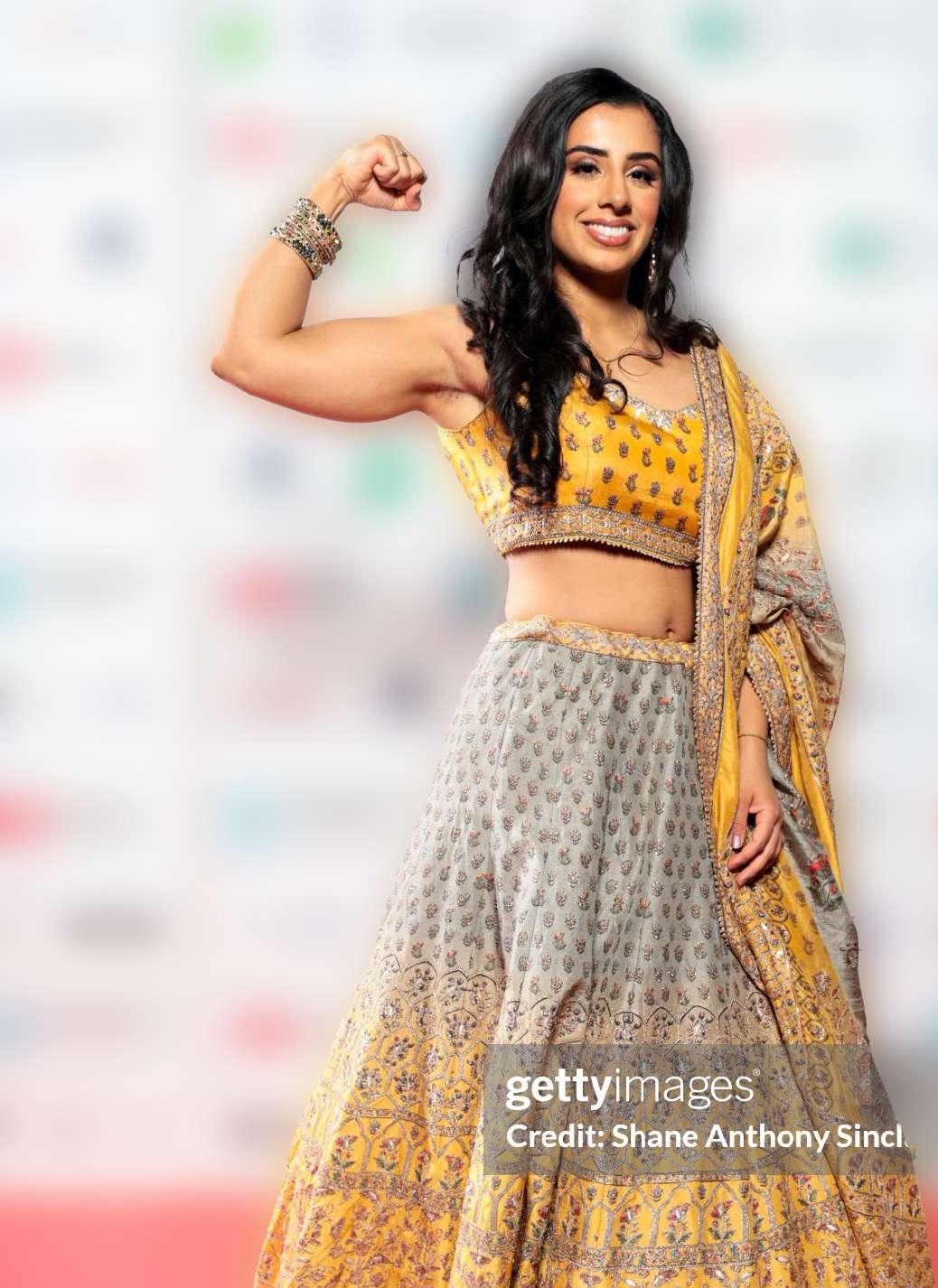
Age: 26
Height: 5ft 4in
Bicep: 36cm
Training Regime: 1.5 hours a day, six days a week
Record Holder: Most times to squat lift her own body weight in one minute
Instagram: @karenjeet_bains
As the holy month of Ramadan approaches, millions around the world eagerly anticipate the spiritual journey that comes with fasting from dawn to sunset. But fasting and good health should go hand in hand.
“Maintaining a balanced and nutritious diet while observing fasting during Ramadan is crucial for good health and wellbeing,” advises registered dietitian Priyanka Jonnalagadda MS, RD.
Ramadan typically includes two primary meals: Suhoor (pre-dawn meal) and Iftar (meal to break the fast after sunset). Suhoor should include complex carbohydrates, protein, and healthy fats to provide sustained energy throughout the day. Iftar should be a balanced meal that replenishes nutrients and hydrates the body after fasting. To maximize the fasting period and ensure you have enough energy throughout the day, have your Suhoor meal as close to dawn as possible.
Jonnalagadda also recommends these fundamental principles to ensure your best health during this time:
Focus on whole grains. Oatmeal, whole wheat bread, barley, or brown rice are rich in complex carbohydrates that provide a slow and steady release of energy.
Choose lean proteins. Protein-rich foods such as eggs, dairy, lean meats like fish or chicken, legumes (beans, lentils, chickpeas), and tofu help keep you feeling full and satisfied.
Reach for healthy fats. Add healthy choices like avocado, nuts (almonds, walnuts, or pistachios), seeds (chia seeds or flaxseeds), and nut butter to your Suhoor meal for sustained energy.
Don’t forget the fiber. Fiber-rich Foods: Incorporate plenty of fruits, vegetables, whole grains, legumes, and

nuts, which are fiber-rich foods that promote digestive health, help you feel fuller for longer, and prevent constipation during fasting.
Stay hydrated. Drink at least 8-10 glasses of water between Iftar and Suhoor. Sip water throughout the evening and early morning hours to maintain hydration levels. You may also choose other hydrating beverages, such as herbal tea or infused water. Avoid excessive caffeine and salt intake, as it can lead to dehydration. Instead of consuming large amounts of fluids simultaneously, try to space out your fluid intake throughout the non-fasting hours.
Limit sugar and processed foods. While sugary foods may provide a quick energy boost, they can lead to energy crashes later on. Opt for whole, minimally processed foods that are easier on the digestive system.
Moderate portions. Eating large meals in a short period can lead to indigestion, bloating, and discomfort. Take your time to eat meals slowly and mindfully, chewing food thoroughly before swallowing.
Stay moving. Engage in light physical activity during the non-fasting hours to support digestion. Choose exercises that are light to moderate in intensity, especially if you’re fasting. Activities like walking, gentle yoga, stretching, or low-impact cardio workouts are good options. Instead of long, intense workouts, consider breaking your exercise routine into shorter sessions. Aim for 20-30 minutes of exercise at a time.
Listen to Your Body. Pay attention to how your body responds to fasting. Consult a healthcare professional for guidance if you experience fatigue, dizziness, or other discomfort.

New research shows that high blood pressure, also called hypertension, affects both partners in a marriage. Published in the Journal of the American Heart Association, the study looked at heterosexual couples in England, the United States, China, and India. It found that when one spouse has high blood pressure, the other is more likely to have it too. This was true for both husbands and wives.
The rates of couples having high blood pressure together were 38% in the US, 47% in England, 21% in China, and 20% in India. High blood pressure is called the “silent killer” because there are often no symptoms. Over time, uncontrolled high blood pressure can damage the heart, brain, and kidneys. Getting tested
regularly is important. If your husband has high blood pressure, you might be at higher risk too.
Staying on top of your health can be more fun together. Here’s a few ways to make healthy lifestyle changes that can benefit you both:
● Encourage each other to eat healthy, avoid salt and oil, stay active, and maintain a healthy weight.
● Cook nutritious meals together
● Walk after meals
● Go to each others’ important doctor visits
● Manage stress through yoga and meditation
● Monitor blood pressure at home or with your doctor
● Take medications as prescribed

PHOTOGRAPHER: Geo Mantilla @geomantillaphoto
MAKEUP: Kanwal Batool @iamkanwalbatool
STYLIST: LaDaska Mechelle @ladaskamechelle

Inspiration of Sheetal Sheth

If there’s one thing the actor, author, and activist wants you to know, it’s that you can do anything you want.
• Abhijit Masih •
Sheetal Sheth made a striking entrance into the spotlight with her remarkable performance in the groundbreaking film “ABCD,” fearlessly embodying the lead character—a young Indian American girl navigating the intricate dynamics of family and tradition. Across a career spanning over 20 feature films, Sheetal has consistently embraced bold choices, exploring themes such as open marriage and LGBTQ storylines long before they became widely discussed topics.
H er influence extends far beyond the silver screen. She has graced popular TV shows and lent her voice to iconic series like The Family Guy , showcasing a versatility that knows no bounds. Her voiceover talents have left an indelible mark in films such as Ang Lee’s Life of Pi and video games like “Far Cry.” In addition to her artistic prowess, Sheetal is a staunch advocate for representation and diversity in the world of entertainment. Through her books, social media presence, and the characters she embodies, she fearlessly raises pertinent issues, challenging the industry to strive for authenticity and inclusivity.
S he has been a part of the Western entertainment industry for an extended period and is well-positioned to articulate its flaws, particularly concerning the portrayal of South Asians. Sheth’s recently released book Bravo Anjali! served as a catalyst for a conversation about breaking cultural and gender norms, particularly with its closing line, ”We can do anything we want, little one, anything at all.”
S heth raises a thought-provoking question—what if South Asians faces were part of the traditional casting choices in mainstream production of films and television shows in Hollywood? Would the departure from the norm been instrumental in providing an opportunity to present characters in a way that goes beyond ethnic or racial expectations?
W hat if? The very same question arose in Sheth’s mind as she read an interview with Martha Kauffman, the co-creator of Friends. In the interview, Kauffman was questioned about the lack of racial diversity in the main cast, prompting Sheth to question not only Kauffman and David Crane, the creators of Friends , but also all content creators from the past. Inspired by the interview, Sheth pondered the absence of nonCaucasian characters in a show set in the diverse melting pot of New York City.
A distinguished and award-winning actress, author and producer, Sheth raises the point that these shows, while successful, did not authentically represent their broad audience, which encompasses people of various races. “We grew up watching predominantly white centered media, did we not enjoy it? Of course we did. We connected to the feelings, we connected to what was going on, we connected to the narratives, the conflict,” she observes that there has been a tendency to create content for a specific audience in the past, telling specific stories. “To assume that someone who’s white can’t appreciate content, just because people of color are at the center of it, I think is underestimating the power of good storytelling,” said the versatile actor.
S ince we celebrate the strength, resilience, and achievements of women in March, Sheth reminds us that the possibilities for South Asian women are boundless, transcending the constraints imposed by societal norms or in this case, Hollywood. “We can do anything we want. But these constructs in the business and the need to put us all in certain boxes are telling us that we can only be one thing,” she says. It encapsulates the essence of breaking free from limitations and embracing the diverse potential that lies within every woman. The representation of Indian Americans in Hollywood could have been influenced by a variety of factors. Several challenges may have impacted the visibility and success of Indian Americans in the entertainment industry. These could have been limited opportunities, target audience, casting

Nailing the iconic pose and bringing back ‘90s vibes with a touch of cluelessness.
choices and cultural stereotypes. These stereotypes may have perpetuated certain expectations and hindered the development of nuanced and diverse characters.
C onsider the prospect of a South Asian actor stepping into the shoes of iconic characters like Vivian Ward in Pretty Woman, Carrie Bradshaw in Sex and the City, or Rachel Greene in Friends. The task of replacing these unforgettable roles and envisioning someone else in their place is undeniably formidable. However, various ‘foreign’ actors have successfully carved out their space, breathing life into equally iconic characters. From the timeless elegance of Sophia Loren and the captivating performances of Salma Hayek and Marion Cotillard to the modern charm of Mila Kunis and, more recently, Gal Gadot holding her own in the DC galaxy of superheroes, these actors have proven that talent transcends borders.
S heth, who has appeared both on the silver screen as well as on popular TV shows, willingly embraced the task of reimagining memorable scenes from influential female-centric films and shows, aiming to showcase that a character portrayed by a brown woman can wield the same impact. Sheth’s objective is clear— to demonstrate that if given the chance, brown women could have left an equally indelible mark, altering the trajectory for those who would come after, and creating a platform for them to shine. This departure from conventional casting choices would have paved the way for increased diversity and representation in Hollywood.
she admired growing up, Sheth showcases the transformative power of representation, illustrating that anyone can embody the essence of these iconic characters. Sheth’s journey is a testament to the evolving landscape of representation in Hollywood. As she continues to break barriers, her words echo a powerful sentiment: “We can do anything we want, it’s time the industry not only recognizes the diverse narratives waiting to be told, but to also put their full financial support and resources behind these projects.”
•
“Wearepowerful.We’re notgoingtowaitfor anyone to open the door forus;we’regonnado it ourselves.”
H istorically, Hollywood has been guilty of pandering to narratives that follow predictable paths and stereotypical representation. Sheth who has been in showbiz for over two decades, boldly exposes the hypocrisy. “I’ve experienced this all the time. When I’m pitching and developing things, because I’m not dealing with people who understand the nuance of who we are, they’re always like, where’s the Indian part? Where’s the struggle? Where’s the poverty? Where’s the religion? Where are all the things that they equate South Asia to?” the accomplished actor and author shared her experience dealing with stereotypes prevalent within the industry.
S heth sees this as a powerful message against the constructs that have confined individuals to predefined roles in the entertainment industry. “My books are slice of life stories about this little Indian American Girl. But her race is not the central part. It shows that we also play musical instruments, have dinner with parents and play sports. It’s not always about Diwali and Holi,” said the best-selling author who has recently signed up with Penguin Random House.
“ I wanted to really show that we’re all a blank slate. You can start there and you can turn into anything. We shot all of these in one day,” she explains. “For me, t he whole point of being an actor is to transform and create into other beings, to tell someone’s story. We created all of those things from this blank canvas. I wanted to pay homage to these amazing characters I grew up loving. And also remind everybody that we can be all those things and make it our own . ”
Through a series of six iconic looks paying homage to characters
S heth actively champions representation, employing her voice across various platforms—be it through her books, social media, or the characters she brings to life—to address and highlight the importance of diverse representation in the entertainment industry. She raises the issue of stereotyping. She dismantles the notion that content featuring people of color must adhere to predefined struggles or cultural elements. She challenges the industry’s assumptions,

Like a blank canvas, ready to transform into any form imaginable.


Stepping into the iconic world of Pretty Woman with a touch of modern elegance. Embracing the vivacity and charm of the classic Hollywood tale.

From the chic hairstyle to the fashion-forward outfit, she’s giving us major Rachel vibes

Sheetal Sheth channels the iconic intensity of Carrie in this captivating recreation.
asserting that audiences can appreciate stories that don’t solely focus on expected themes.
W hile recognizing the achievements of certain South Asian figures in the industry, Sheth emphasizes the presence of notable progress. It extends beyond merely featuring characters cast in stereotypical roles that fulfill exotic expectations. “We find ourselves in a position where we’ve made the deliberate choice to chart our own course. The success we’ve attained is a testament to our resolve not to wait for doors to be opened for us; instead, we’re determined to open them ourselves,” she stated.
S heth points out that while progress has been made, there’s still work to be done. She laments the industry’s inclination to greenlight familiar narratives, often centered around weddings, religion, or mythology, due to a lack of understanding of the nuanced, everyday experiences of South Asians. “For me, it’s about educating and hopefully finding allies, partners, who get the nuance and who realize we’re not a monolith. Who realize there are lots of different stories in

“I wanted to payhomageto theseamazing charactersIgrew uploving.Andalso remindeverybody that we can be all those things and make them our own.”
between the weddings, and the religion and the poverty and all the things that they’re used to seeing. Not everything is SlumdogMillionaire
D rawing from her own experiences, Sheth encourages the next generation to be authentic and true to themselves. “Make what resonates with you,” she advises, emphasizing the importance of individual voices in breaking through the noise of the industry. She highlights the democratization of content creation with digital tools and streaming platforms, making it easier for aspiring creators to bring their stories to life. “The winds change all the time; trends are trends for a reason. So make what you want to make. Whether it is a piece of art, a movie or a TV show, piece of photography, whatever it is, make what resonates with you,” she advises.
S heth underlines that the absence of representation is a missed opportunity, as the market consistently shows an appetite for diverse narratives. Reflecting on her experiences, she notes a shift in the mindset of South Asian artists. “We are powerful. We’re not going to wait for anyone to open the door for us; we’re gonna do it ourselves,” she asserts, highlighting the determination and resilience that have propelled the community’s success.
B y bringing these iconic roles to life once more, Sheetal underscores the words of the character in her book, reiterating the empowering message: “We can do anything we want, little one, anything at all.”

High heels, city lights, and a touch of glamour—just another day in the sophistocated world of Carrie Bradshaw in Sex and the City.

Thanks to its dramatic temperature swings, this season can be one of the most challenging to navigate for both mind and body. But these seasonal health tips can keep you in balance.
LINDSEY GALLOWAY
The cold winter months are giving way to warmer weather. And while you may be ready to fling open the windows and plunge headfirst into spring, it may be wise to use this transitional time to pay special attention to mind and body to ensure both stay in balance for the year ahead.
“In seasonal transitions, the doshas are more vulnerable and more likely to go out of balance because of the nature of change,” says Veena Haasl-Blilie, certified Ayurveda practitioner, meditation teacher, and monk, and founder of Saumya Ayurveda. “The winter to spring transition is especially dramatic. Depending on where one lives, temperatures can swing 50 degrees in one day. The more drastic the change there is, the more dramatically the doshas can dance.”
For those new to doshas, Haasl-Blilie explains that in Ayurveda, we are all composed of three doshas, and each season, stage of life, and time of day has a dominant dosha—including Kapha, Pitta, and Vata. The second half of winter through early spring is Kapha season, so it can be more likely for Kapha imbalances to occur (see sidebar “Signs of Imbalance”).
But by working with whatever season is present, we can do more to help keep the doshas in balance to ensure a bright, blooming season ahead. Here are some tips to try.
Since Kapha tends to be a heavier dosha, now can be the time to switch to lighter foods to bring balance. Think fresh fruits and vegetables, says Haasl-Blilie. You can

“Balance will feel different to each person because everyone is different,” says Haasl-Blilie. “Clients will say to me, ‘I feel like myself again’ and that’s a homerun.”
KAPHA
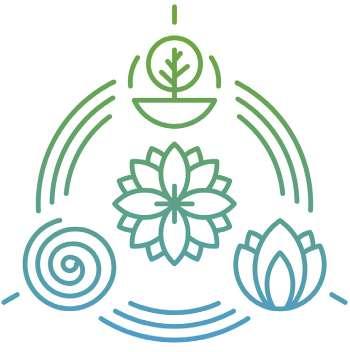
also seek out pungent foods like chilis, ginger, onion, garlic, and bitter foods including dark leafy greens, turmeric and astringent like legumes and cranberries.
She also notes that Kapha is heavy, cool, and oily in nature, so look for foods that counterbalance these qualities. Start skipping the dense filling winter meals to more light, dry, and pungent dishes.
You can also take advantage of the season’s newfound bounty. “As soon as they’re available, turn to cleansing early spring greens like arugula, spinach, and chard,” says Haasl-Blilie. She recommends consuming them cooked and spiced for better digestion and warmth.
This is also the time to avoid overindulgence. Stick to two or three meals a day, and on a consistent and mindful routine to best maintain balance during this transition.
An excess of Kapha energy this season can lead to lethargy, and stagnancy, but heatbuilding yoga can help introduce more motivation and lightness.
Haasl-Blilie recommends chest-opening poses that nourish the lung, stomach, and sinuses, while alternating backbends and forward bends can help release tension. She also recommends standing poses over seated postures to help build heat.
Inversions can also stimulate circulation, as can building a gradual intensity to your practice for more vigorous movement. Her favorites for this time of year include Surya Namaskar (Sun Salutations), Bhujangasana (cobra), Vasisthasana (side plank) and leg lifts.

Ayurvedic herbs and spices not only offer a slate of their own unique health benefits, but can also soothe imbalanced doshas. In Kapha season, herbal support can be used to boost energy, support immune system function, cleanse and detoxify.
To help bolster defenses against springtime colds and allergies, keep your pantry stocked with these staples:
Ginger. Ginger’s antioxidants support respiratory and immune function, and improve circulation and digestion.
“Ginger generates ignite agni (digestive fire) and promotes heat in the body,” says Haasl-Blilie. “It can help expel mucus, stimulate the metabolism, and kickstart sluggish indigestion.”
Turmeric. This potent anti-inflammatory has antibacterial, antiviral effects. “Astringent turmeric is cleansing and mobilizing—while supporting immune system function,” says Haasl-Blilie. While it balances all three doshas, if you take too much, it may aggravate Vata and Pitta doshas, she warns.
Cinnamon. This warming spice has plenty of positive qualities that are helpful for Kapha season. “Cinnamon enkindles digestive and other fires (agni), helps to eliminate toxins (ama), reduces Kapha dosha in the respiratory system,” Haasl-Blilie explains. “Heating and sweetly delicious, cinnamon increases circulation to the extremities— warm up those cold toes!”
Pippali. A close relative of the familiar black pepper table spice, pillali can serve as an effective decongestant, ideal for managing coughs and releasing mucus.
Tulsi. Also known as holy basil, tulsi is a sacred, balancing plant for both mind and body. “It is warming, clears the mind, and imparts its sattvic qualities,” says Haasl-Blilie.
With all herbs, what works well for one person may be unbalancing for another. To know what herbs are correct for you, be sure to schedule a consultation with an Ayurvedic provider.
Every day and season can be a good time to look for imbalances. No matter what Kapha season brings, you should feel comfortable defining what feels right to you and your body. In general, you should feel more energized and clearer when your doshas are aligned.


Since late winter to early spring is considered Kapha season, you may be more likely to notice an imbalance in this dosha according to Ayurveda. Here are some signs you may be out of balance, according to Veena Haasl-Blilie, founder of Saumya Ayurveda.
Body:
→ Slow, sticky, sluggish bowel movements
→ Feeling foggy, dull, lethargic, or heavy
→ Weight gain and difficult losing weight
→ Thick, white coating on the tongue
→ Excess bodily fluids and mucus
→ Difficulty rising in the morning
→ Seasonal allergies, hay fever
→ Pre-diabetes, diabetes
→ Sinus congestion
→ Slow metabolism
→ Excess sleeping
→ Excess ear wax
Spring is an optimal time to purify both body and home. Alongside prioritizing your health, a seasonal spring clean can aid your body back into balance. Here are a few tips to refresh your home for the season:
→ Open windows for fresh breezes and sunlight. Allow in vibrant, Kapha-reducing spring energy.
→ Wash linens, pillows and blankets. Remove dust to improve airflow and breathing.
→ Declutter closets and shelves. Donate unused items to make space.
→ Scrub surfaces and floors to clear dirt and stagnant energy.
→ Introduce plants, flowers or garden herbs to purify indoor air.
→ Display cheerful colors and art to uplift mood and energy.
→ Diffuse cleansing essential oils like eucalyptus, tea tree or mint.
→ Play upbeat music to help move stale winter vibrations.
→ Oily skin and hair
→ High cholesterol
→ Varicose veins
→ Glaucoma
→ Gallstone
→ Edema
Mind:
→ Tendency for “emotional overeating”
→ Depression, melancholy
→ Sentimental, stubborn
→ Greedy, hoarding
→ Overly attached
→ Possessive




South Asian women often face an uphill battle when it comes to claiming their financial independence. But it’s never too late (or too early) to start building lasting wealth. Here’s our ultimate guide to long-term money management.
Lindsey Galloway
As March arrives, so does Equal Pay Day (March 6), the date that symbolizes how far into the new year women must work to earn what men did in the previous year alone. For South Asian women, who face additional cultural barriers around financial independence and additional workplace discrimination, achieving equal pay and building lasting financial security, can prove to be even more of an uphill battle.
“Securing your financial future as a South Asian woman can be challenging because of cultural beliefs that may hinder wealth-building,” explains Dr. Priya Nalkur, psychologist, DEI facilitator and author of the upcoming Stumbling Towards Inclusion: Finding Grace in Imperfect Leadership. “To overcome these challenges, you must adopt a determined focus on financial independence.”
By empowering themselves with practical solutions and culturally specific advice, South Asian women can start to protect the wealth they’ve worked hard for. To help, we put together the ultimate guide to managing your money, setting realistic goals securing your financial future.

Financial independence means more than just having the money to spend on what we want. Rather, having our own wealth often offers us greater flexibility, more freedom, and the opportunity to protect ourselves and our families. But we all have to start somewhere. Here are five ways to start re-thinking your relationship to money and start building for the future.
UNHELPFUL NORMS. Cultural beliefs around money can often be challenging for South Asian women, and can significantly harm a woman’s wealth-building potential for the longrun. “Cultural norms may suggest dependence on husbands for financial stability; view women who pursue wealth as overly ambitious or greedy; or tell you that women should not make more money than their male partners,” says Dr. Nalkur. “Rejecting these notions is paramount to reclaiming your power. Seek support from friends, family, and partners who encourage your success without feeling threatened by your ambition.”
OUT LIKE-MINDED COMMUNITIES.
So much financial advice and community has been built around the model built for men; but many influenc ers are changing that. Communities like Simran Kaur’s podcast “Girls That Invest” have rewritten old rules and demystified investing for a new generation. “Your financial literacy isn’t something you’re born with,”
explains Kaur. “It’s a muscle, and it can grow over time.”
The first step is asking yourself what it really means to you to have financial independence. “Will you manage a separate portfolio from your spouse’s (if applicable)? Is joint investing with a friend or sibling an option?” asks Dr. Nalkur. “Opening separate bank accounts, including ones for your children (if any), can further reinforce financial autonomy.”
ENLIST EXPERTISE. Don’t be afraid to seek out the expertise of a financial advisor; just ensure they are certified fiduciaries obligated to provide unbiased, evidence-based financial guidance. Finding the right financial advisor you trust can provide tailored guidance to help you achieve your financial goals throughout your life, and adjust their advice as your needs

DIVERSIFY YOUR INWhile a traditional 40-hour a week job can be great, women should always be exploring diverse income streams. That might include real estate, or creator economies like course creation or affiliate marketing. Having multiple sources of income can provide more security and allow you to leave jobs that are unfulfilling.

Financial advice naturally will vary throughout your life stage. Whether it’s time to spend on your children’s college education or save for your own retirement, your goals and priorities should shift. “Managing money and building your financial wealth comes down to a financially sound mindset, good preparation, and good habits,” says Dr. Nalkur. “And those start early.” We asked her the themes that each age group should focus on, and how to achieve those goals now.
Age 5-10: Learn how to count and collect money. Explore money: look at coins and bills from around the world. Understand what currency is. Understand what you can and cannot buy with one US dollar or one UK pound or one Indian rupee, for example. This builds interest and curiosity.
Age 10-18: Initiate a weekly allowance system, allocating funds into spending, saving, and giving. Learn how to track your spending and open a bank account with parental supervision. At this age, you might also start earning your own money through part-time jobs. At age 18, apply for a credit card and start building your credit.
Age 19-29: Invest small monthly amounts ($100$250/month) in long-term growth accounts. Save a portion of your monthly paycheck each

month. If you’re in school, consider part-time work to earn and save. Apply for grants and stipends before resorting to loans for educational expenses. Keep track of your student loans, if any, and start paying them off in small increments as soon as you can, even if it’s just $25/month. You should know how much you have in your checking account at any time, and how much you need for rent and expenses. Start a stock portfolio and try to invest a little.
Age 30-35: Build your emergency fund. Explore passive income strategies and make a plan for one or two that fit your lifestyle and needs. Hire a financial planner. Consider purchasing a property instead of renting. Open your retirement account if you haven’t already. If you have kids, start a 529 or other long term educational strategy for them as soon as you can. Build credit by taking out small loans that you know you can pay off, like a car loan or a home improvement loan. Look into other strategies for saving and investing like life insurance, disability insurance, and pension plans. Maintain at least one separate bank account.
Age 36-45: Focus on saving for retirement and diversifying your investments. Consider purchasing another property, this time for investment purposes. Keep track of your net worth, aiming to exceed $1M by age 45. Pay all insurance premiums and credit cards on time. Do not carry balances on your credit cards. Understand your financial risk profile and consider taking small risks.
Age 46-60: Plan for retirement and financial independence. By this point, you have some stability if all has gone well. If you have kids, you’ll have to allocate a significant portion to their education. Continue to grow your wealth, but also spend it so that you don’t end up with a massive surplus in your late 70s and 80s.
Age 61-80: Passive income, retirement, and pensions support you while you travel, visit family, and enjoy your life.

Examining your relationship with money is an important step in gaining financial freedom. Reflective questions can help you understand what past beliefs and experiences have shaped your financial habits and psychology, especially as you build toward your future.
Your upbringing, culture, family, and gender all influence financial decision-making, and understanding those beliefs can help you determine what you still value, and where you want to make generational changes.
Here are the questions Dr. Nalkur suggests you start with:
What have my parents taught me about money (implicitly and explicitly)? How do I want to be like them or different from them in their financial habits?
influenced your beliefs about money. Look at the limiting patterns and the empowering patterns and decide for yourself what beliefs you will hold as you build your plan for financial freedom.
What are my financial goals?
Define short-term and long-term objectives, such as buying a home, saving for retirement, funding education, caring for parents, travel, etc.

Whether you’re aware of it or not, your “financial playbook” has come from your parents and community. Think critically about what their behaviors, psychology, and habits have taught you and what, if anything, you’d like to change. Consider how much pressure you have to conform to their financial beliefs. Be strong and invest in yourself: you are your ticket to financial freedom.
What cultural beliefs or social pressures are influencing my financial decisions?
Reflect on how being a South Asian woman has
What does it mean to be financially independent?
Everyone will have a different answer to this question. Consider how much your spouse (if any) influences this, and how much you want them to influence your financial future.
What are my spending and saving habits?
Examine your habits without judgment. It’s important to get a good handle on your habits so that you can develop a good risk profile when it comes to investing.
Who, if anyone, can I rely on?
For financial independence, you want to be able to answer “me” to this question. If you find you are mostly relying on others, think about how you can change the balance of power to take control of your finances.
What is holding me back from being financially free?
This is a great question that will help you to see whether it is spending, cultural messages, family, societal expectations of South Asian women, or psychology that is limiting your financial freedom.
An aging white male college professor develops a dangerous obsession with his new Pakistani colleague in this modern, iconoclastic novel that is as powerful, riveting, and disturbing as Lolita, Disgrace, and A Little Life
Dr. Oliver Harding, a tenured professor of English, is long settled into the routines of a divorced, aging academic. But his quiet, staid life is upended by his new colleague, Ruhaba Khan, a dynamic Pakistani Muslim law professor. Ruhaba unexpectedly ignites Oliver’s long-dormant passions, a secret desire that quickly tips towards obsession after her teenaged nephew, Adil Alam, arrives from France to stay with her. Oliver becomes a mentor to Adil, using his friendship with the boy to draw closer to his aunt. Getting to know them, Oliver tries to reconcile his discomfort with the worlds from which they come, and to quiet his sense of dismay at the encroaching change they represent—both in background and in Ruhaba’s spirited engagement with the student movements on campus.
After protests break out on campus demanding diversity across the university, Harding finds himself and his beliefs under fire, even as his past reveals a picture more complicated than it seems. As Ruhaba seems attainable yet not, and as the women of his past taunt his memory, Harding reacts in ways shocking and devastating.
About the Author: Sonora Jha is the author of three books, most recently the novel The Laughter (2023), which is long listed for the 2024 Aspen Words Literary Prize and is named one of the Best Books of 2023 by the New Yorker, NPR, and others. After a career in journalism in India and Singapore, Dr. Jha is now a professor of journalism and an associate dean at Seattle University.
Sonora Jha has crafted a complex character that both fits and stands out in our time. The book uncovers loneliness, the perspective of innocence, and the threat of white rage in America. The Laughter is a gripping portrayal of privilege, radicalization, class, and academia, urging us to question our assumptions as readers and citizens.

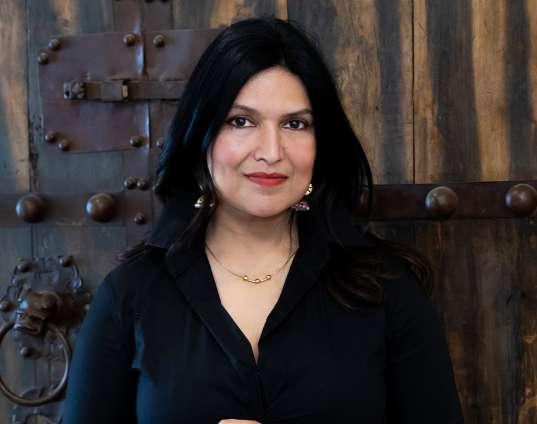

L I V E O N L I N E
I N S T R U C T I O N
F a l l i n l o v e w i t h m a t h
4 - 6 S T U D E N T S
P E R C L A S S
D e v e l o p i n d e p e n d e n t t h i n k i n g
A d v a n c e b e y o n d t h e s c h o o l c u r r i c u l u m
Q u a l i t y e d u c a t i o n a t a n a f f o r d a b l e p r i c e
B u i l d c o n f i d e n c e i n m a t h & p r o b l e m - s o l v i n g
Y e a r r o u n d p r o g r a m s

S U P P O R T I V E E N V I R O N M E N T S T R O N G C U R R I C U L U M


M a t h c o m p e t i t i o n t r a i n i n g
C o m m u n i t y e v e n t s
P a r e n t & t e a c h e r e d u c a t i o n


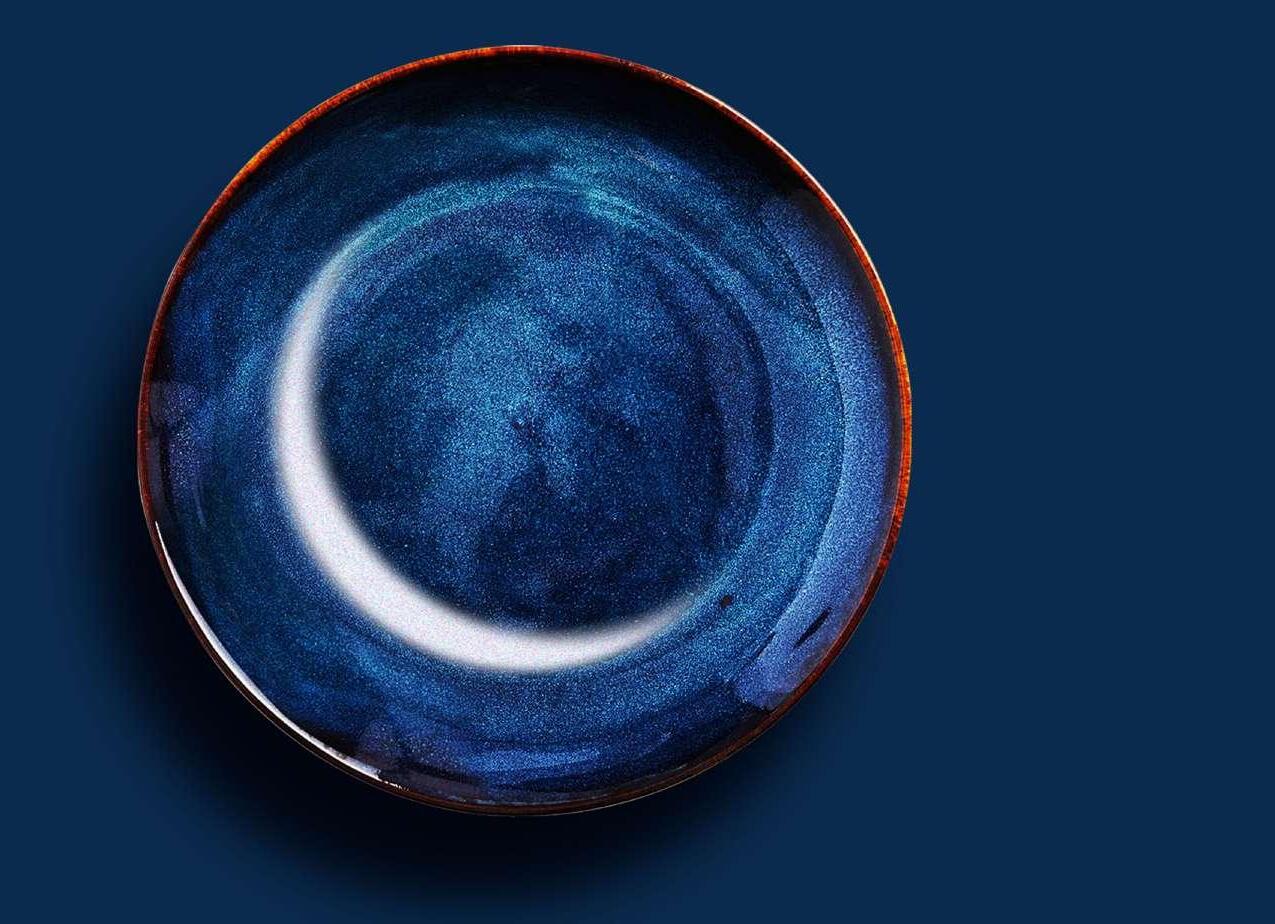
Feasting after a long fast, Ramadan is all about good food that celebrates the importance of food and eating right.
• Bindu Gopal Rao •Ramadan is the 30-day fasting period in which devout Muslims do not eat from dawn to dusk. This year, it is expected to start from March 11 and go through April 9. We hand-picked some recipes from women chefs and experts who share some quintessential Ramadan recipes.
Keema samosa is a popular savory Iftar snack in the month of Ramadan. It consists of a crispy, triangular pastry shell filled with a spicy mixture of minced meat. The filling is encased in the pastry dough and deep-fried until golden brown and crispy. Keema samosas are served hot and accompanied by various chutneys or sauces, making them a favorite Iftar snack.
● Mutton Keema ½ kg
● Onions ½ kg chopped finely.
● Green chilies 4 chopped
● Ginger garlic paste 1 tsp
● Chili powder ¼ tsp
● Turmeric Powder ¼ tsp
● Garam masala Powder 1 tsp
● Lime ½
● Coriander leaves handful
● Salt to taste
● Oil as required
● Maida 250 grams
● Water 160 ml
● Oil 1 tbsp
● Salt to taste
● Maida 4 tbsp
● Water as required
METHOD
● For the filling, clean keema and cook it with salt, ginger garlic paste and turmeric powder till

the water is absorbed. In a wok add 2 -3 tbsp of oil and add finely chopped onions and sauté until pinkish brown. Then add green chilies. chili powder, garam masala powder and sauté again. Now add the keema and mix well. Switch off the flame. Then, add juice of lime and chopped coriander leaves. Allow it to cool.
● For the wrapper, mix flour, salt, water, and oil and knead to make a soft dough. Leave the dough aside for half an hour. Make small balls and roll them into small puri’s. Apply oil and sprinkle flour.
Layer four puri’s together and roll it out into a big chapathi. Toast on tawa, cut into three strips and slowly separate the strips. Set aside. To make the flour paste, mix together flour and water until pasty in texture.
● To make the samosas, take each strip and fold it into a triangle shape and fill the masala. Seal the sides with flour paste. Set aside. Now, in a kadai, pour oil and deep fry the samosas until golden. Serve hot with a sauce of your choice.
This is a cooling summer drink from the streets of Old Delhi and is now getting famous in Hyderabad as well, known for its refreshing taste. It is a super easy recipe to make with minimal ingredients and is a show stopper drink. This heavenly Indian sharbat recipe is a combination of fruity and floral flavours which is made by combining milk, watermelon, rose syrup and basil seeds. The drink is then garnished with rose petals and is served chilled.
● 1 litre milk
● ½ watermelon diced
● ½ cup rose syrup / rooh afza
● ½ cup sugar
● ¼ cup basil seeds (sabja seeds)
● 2 glasses chilled water
● Ice cubes
● Rose petals for garnishing

METHOD
● Soak the basil seeds in water for about 10 minutes.
● In 2 glasses of chilled water, mix ½ cup sugar, stir well and keep it aside.
● In a pitcher, add rose syrup, milk, sugar water, diced watermelon, soaked basil seeds.
● Stir everything together until well combined.
● Add ice cubes to the pitcher.
● Pour the sharbat into glasses and garnish with rose petals.
● Mohabbat ka sharbat is ready to be enjoyed.
This is a popular dessert from Mughlai cuisine. Traditionally it is prepared by frying the bread slices in ghee. In this healthier option of the dessert the bread slices are toasted and then drenched in sweetened milk reduction. To give a slight crunch they are topped with julienned almonds. This healthy version makes it a wholesome and delicious post meal option which is nutritionally balanced and satiating as well.
● White bread (3.5” x 3.5”) 4 slices
● Toned milk (3.5% fat) 750 ml
● Fat-free milk (0–0.8% fat) 750 ml
● Sugar 85 gm (for syrup)
● Sugar 4 tsp (for milk)
● Almonds 12, thinly sliced
● Saffron 1 tsp
● Green cardamom powder ¼ tsp
● Rose water 1 tsp
● Ghee 10 ml

● Combine both types of milk in a pan. Bring it to a boil and let it simmer, stirring occasionally, until it reduces to ¼ of its original quantity. Turn off the heat and immediately add cardamom powder. Cover and set aside.
● For the syrup, boil 1 cup of water and add ½ cup sugar. Simmer until the sugar completely dissolves. Remove from heat and add saffron and rose water. Let it cool.
● Preheat the oven to 160°C for 7 to 10 minutes.
● Spread ½ tsp of ghee on each slice of bread. Cut each slice into quarters and toast all 16 pieces in the preheated oven for 5–7 minutes until evenly browned.
● Add 4 tsp sugar to the reduced milk and cook for another minute. Allow it to cool.
● Dip each toasted bread piece into the sugar syrup and arrange them on a serving dish.
● Pour the reduced milk over the bread before serving.
● Garnish with thinly sliced almonds. Serve immediately.
